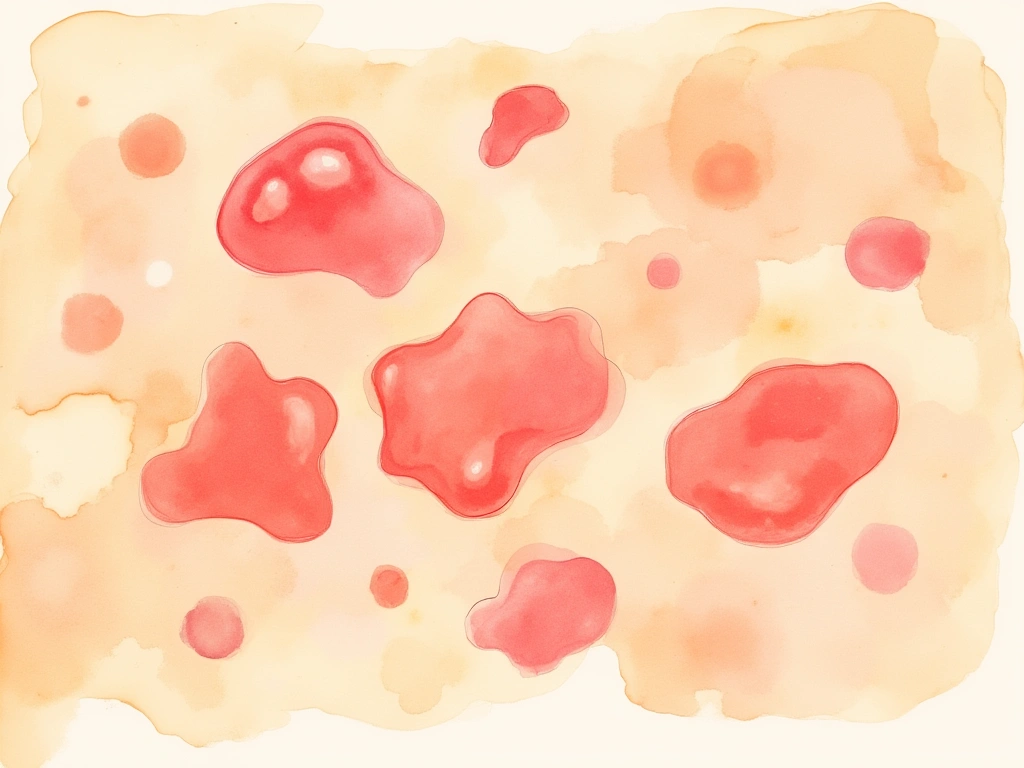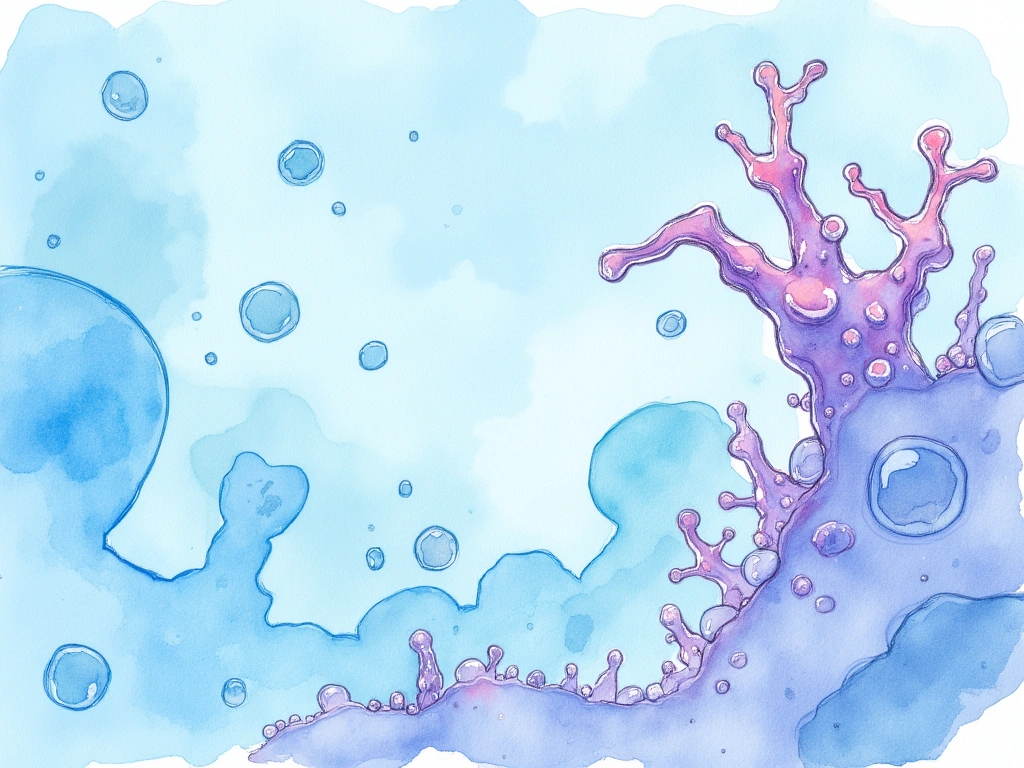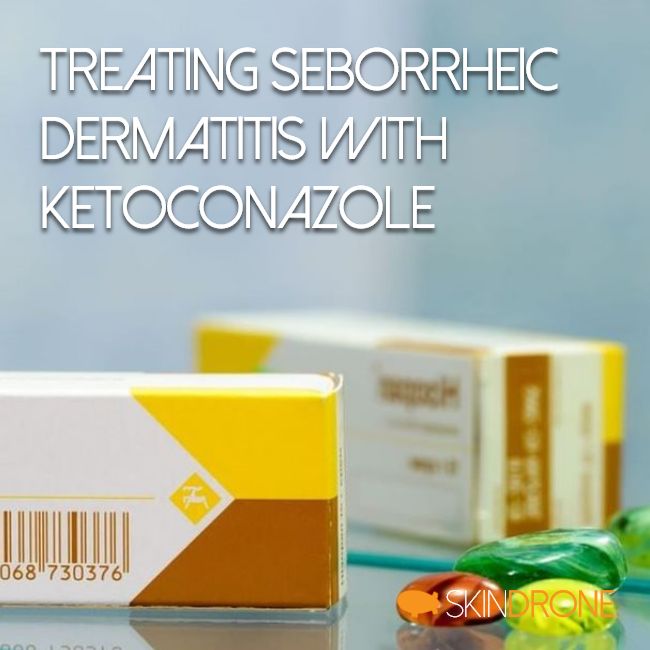- Kämpfen Sie mit roter, schuppiger, juckender Kopfhaut oder Haut?
- Ketoconazol ist eine führende antimykotische Behandlung für seborrhoische Dermatitis (SD).
- Diese Übersicht befasst sich mit der Wissenschaft hinter Ketoconazol, seinen Anwendungen und wie es helfen kann, Ihre SD-Symptome zu lindern.
- Erfahren Sie mehr über die richtige Anwendung, mögliche Nebenwirkungen und langfristige Managementstrategien.
- Gestützt durch Forschung und Empfehlungen von Dermatologen.
Seborrhoische Dermatitis (SD) ist eine häufige Hauterkrankung, die Rötungen, fettige Schuppen und Schuppenbildung verursacht. Sie tritt häufig auf der Kopfhaut, im Gesicht, an den Ohren, auf der Brust und am Rücken auf und führt zu anhaltendem Juckreiz und Schuppenbildung. Ketoconazol, ein Antimykotikum, das in Shampoos und Cremes erhältlich ist, wird häufig von Dermatologen zur Behandlung von seborrhoischer Dermatitis und ihren lästigen Symptomen empfohlen. Dieser Artikel bietet eine detaillierte, forschungsbasierte Übersicht über Ketoconazol als Behandlung für seborrhoische Dermatitis.
Kurze Zusammenfassung: Ketoconazol ist ein weit verbreitetes topisches Antimykotikum zur Behandlung von seborrhoischer Dermatitis. Es zielt auf Malassezia-Pilze ab, reduziert Hautentzündungen und wird typischerweise als 1-2%iges Shampoo oder Creme 2-3 Mal pro Woche zur laufenden Behandlung angewendet. Im Allgemeinen ist es bei bestimmungsgemäßem Gebrauch sicher, potenzielle Nebenwirkungen sind mild und können Hautirritationen oder Hautausschlag umfassen.

Understanding Seborrheic Dermatitis
Seborrhoische Dermatitis ist eine chronisch-entzündliche Hauterkrankung, die durch Schuppenbildung, Rötung und Juckreiz gekennzeichnet ist. Sie betrifft häufig Bereiche, die reich an Öldrüsen sind, wie Kopfhaut, Gesicht, obere Brust, Rücken und Leistengegend. Schuppen gelten als eine mildere Form von SD, die speziell auf die Kopfhaut beschränkt ist [1].
SD ist eine wiederkehrende Erkrankung mit Schüben, die unvorhersehbar auftreten und dann abklingen können, nur um später wiederzukehren. Der Schweregrad der Symptome variiert von leichten Schuppen bis hin zu persistierenden, unangenehmen Läsionen und Plaques.
Obwohl seborrhoische Dermatitis jeden betreffen kann, tritt sie häufiger bei Säuglingen und Erwachsenen im Alter von 30 bis 60 Jahren auf. Menschen mit HIV/AIDS leiden oft unter schwereren und behandlungsresistenteren Formen von SD [2].
[IMG: Photographs depicting mild to severe seborrheic dermatitis on scalp, face, ears, chest]
Seborrhoische Dermatitis ist nicht ansteckend. Ihre genauen Ursachen sind komplex und nicht vollständig geklärt, beinhalten aber wahrscheinlich eine Kombination aus genetischer Veranlagung, hormonellen Schwankungen, Stress, Umweltfaktoren wie Wetter und Ernährungszustand [1].
Die Behandlung zielt darauf ab, die Symptome zu kontrollieren und zukünftige Schübe zu verhindern. Leichte Fälle können sich durch regelmäßiges Shampoonieren und rezeptfreie (OTC) Behandlungen verbessern. Hartnäckigere Fälle erfordern oft verschreibungspflichtige Antimykotika und entzündungshemmende Medikamente.

How Ketoconazole Treats Seborrheic Dermatitis
Ketoconazole is a leading prescription medication for seborrheic dermatitis. This topical antifungal works by targeting Malassezia yeasts on the skin, which are known to contribute to SD flare-ups.
Ketoconazol ist ein führendes verschreibungspflichtiges Medikament zur Behandlung von seborrhoischer Dermatitis. Dieses topische Antimykotikum wirkt, indem es auf Malassezia-Hefen auf der Haut abzielt, von denen bekannt ist, dass sie zu SD-Schüben beitragen.
What is Ketoconazole?
Ketoconazole is an azole antifungal medication. Azoles combat fungal infections by disrupting the fungal cell membrane and blocking ergosterol synthesis [3]. Ergosterol is essential for maintaining the structural integrity of fungal cell walls.
Introduced in 1979, ketoconazole quickly became a popular antifungal due to its broad-spectrum activity [4]. It is used to treat various fungal infections of the skin and nails.
For seborrheic dermatitis, ketoconazole is available in shampoo, cream, gel, or foam formulations for topical application. Concentrations typically range from 1% to 2%.
Ketoconazole’s Antifungal Action Against Malassezia
Research indicates that ketoconazole’s primary mechanism in treating SD is reducing Malassezia yeast on the skin. Malassezia are lipophilic fungi that thrive on sebum and are naturally present on human skin.
In individuals prone to seborrheic dermatitis, Malassezia yeasts are believed to overgrow and trigger an inflammatory response. This leads to the characteristic itching, redness, and flaking of SD [5].
Laboratory studies have demonstrated ketoconazole’s strong antifungal activity against various Malassezia species. These studies show its ability to damage fungal cell membranes and inhibit fungal growth [].
However, a small 2016 study involving 6 SD patients found that while ketoconazole improved symptoms, it did not significantly reduce Malassezia counts after two months of treatment [].
This suggests that while antifungal effects are important, ketoconazole may also alleviate SD through other mechanisms.
Beyond Antifungal Effects: Other Potential Actions
If ketoconazole’s benefits aren’t solely due to reducing Malassezia numbers, what other mechanisms might be at play? Potential alternative pathways include:
- Modifying Fungal Gene Expression: Ketoconazole might decrease the fungi’s ability to cause disease (virulence) without necessarily killing the yeast [6].
- Modulating Human Gene Expression: It could enhance the skin’s protective barrier and strengthen immune responses against Malassezia.
- Anti-Inflammatory Properties: Ketoconazole may reduce inflammation triggered by the yeasts on the skin [].
Further research is ongoing to fully understand how ketoconazole works in seborrheic dermatitis. Its effectiveness likely involves more than just direct antifungal activity.

How to Use Ketoconazole for Seborrheic Dermatitis
Based on current research, here’s how ketoconazole is typically used to manage seborrheic dermatitis flare-ups:
Basierend auf aktuellen Forschungsergebnissen wird Ketoconazol typischerweise wie folgt zur Behandlung von Schüben seborrhoischer Dermatitis eingesetzt:
Standard Treatment Protocol
Topical ketoconazole is commonly prescribed for seborrheic dermatitis on the face, scalp, chest, and other affected areas. It’s suitable for both mild dandruff and more severe, widespread lesions.
The standard application is a 1-2% ketoconazole product applied to affected skin 2-3 times per week. It can replace regular shampoo or be used as a leave-on treatment overnight.
For scalp treatment, ketoconazole shampoo is massaged into the scalp, left for 3-5 minutes, and then rinsed out. Creams, gels, and foams are typically applied and left on overnight before rinsing in the morning [7].
Treatment Duration and Maintenance
For initial symptom control, ketoconazole is often used regularly for 4-8 weeks. Due to the chronic nature of seborrheic dermatitis, ongoing maintenance treatment 2-3 times per week is usually needed to prevent flare-ups [7]. Long-term ketoconazole use is often necessary for managing this recurring condition.
Complementary Therapies
Other well-researched treatment options that can be used alongside or as alternatives to ketoconazole include:
- [Coal tar][1]: Offers additional antifungal and anti-inflammatory benefits.
- [Salicylic acid][2]: Helps to exfoliate and remove excess skin scales.
- Phototherapy: Used for severe cases unresponsive to topical treatments.
- Mild corticosteroids: To reduce inflammation (though long-term use can have complications).
Combining ketoconazole with these therapies can improve the overall management of seborrheic dermatitis.
For those interested in natural approaches, some remedies show promise for seborrheic dermatitis:
- [Tea tree oil][3]: Known for anti-inflammatory, antibacterial, and antifungal properties. Dilute and apply topically or use in shampoos.
- [Aloe vera][4]: Soothes and reduces inflammation. Aloe vera gel is a popular topical option.
- [Honey][5]: Has antimicrobial properties and helps retain moisture, potentially reducing scaling.
- [Probiotics][6]: Certain strains, like Lactobacillus paracasei, are being studied for their impact on gut health and immunity, which may influence SD.
- [Stress management][7]: Stress can worsen SD; relaxation techniques like meditation may help.
- [Diet modification][8]: Some individuals find reducing oils, dairy, and sugar beneficial. An anti-inflammatory diet may also be helpful.
Always consult with a dermatologist before starting any new treatment, including natural remedies, to ensure they are appropriate for your specific condition. While natural options can be part of a comprehensive strategy, more research is needed to fully understand their effectiveness.

Ketoconazole Safety and Potential Side Effects
Ketoconazole is generally safe and well-tolerated when used as directed. However, like all medications, it can have potential side effects that require monitoring.
Ketoconazol ist im Allgemeinen sicher und gut verträglich, wenn es wie vorgeschrieben angewendet wird. Wie alle Medikamente kann es jedoch potenzielle Nebenwirkungen haben, die überwacht werden müssen.
General Safety Profile
The typical 1-2% concentration of ketoconazole used for SD is considered safe for long-term use when instructions are followed [8].
A study of 246 participants found no adverse effects in the 97 using ketoconazole shampoo, while 9 out of 100 people using selenium sulfide reported reactions [9].
Potential mild side effects can include:
- Scalp dryness or irritation
- Itching or burning sensation
- Rash
- Changes in hair color or texture
These side effects are often temporary and may resolve with continued use. Always report any reactions to your doctor.
Liver Toxicity Considerations
Oral ketoconazole has been linked to rare cases of liver toxicity. However, topical ketoconazole, when used correctly, has not shown this risk.
A review of 23 years of adverse event reports found only 8 cases possibly linking topical ketoconazole to liver issues. All of these involved improper use, incorrect dosing, or accidental ingestion [].
Use During Pregnancy and Breastfeeding
Consult your physician before using ketoconazole if you are pregnant or breastfeeding. Safety data is limited, but there is no evidence of birth defects. Potential risks should be discussed with your doctor in relation to the benefits [1].
Patch Testing for Sensitivity
Some individuals may experience allergic reactions or contact dermatitis from topical ketoconazole. Patch testing on a small area of skin for 24-48 hours can help identify sensitivity before broader use [1].

Key Takeaways on Ketoconazole for Seborrheic Dermatitis
- Ketoconazole is an effective topical antifungal medication for managing seborrheic dermatitis outbreaks.
- It works by targeting Malassezia fungi, reducing inflammation, and potentially altering gene expression related to the condition.
- Standard treatment involves applying a 1-2% ketoconazole product to affected areas 2-3 times weekly for ongoing management.
- Topical ketoconazole is generally safe when used as prescribed, though mild side effects are possible. Liver toxicity is a concern with oral ketoconazole but not typically with topical use.
- Talk to your dermatologist to determine if ketoconazole is appropriate for your seborrheic dermatitis treatment plan. It can be a valuable tool for managing flare-ups and reducing symptoms.

In Conclusion
Seborrheic dermatitis is a chronic skin condition that often requires long-term management to control symptoms and prevent recurring flare-ups. For many, topical ketoconazole offers significant relief from itching, redness, and dandruff. When used correctly, in combination with other treatments and natural approaches, ketoconazole can be a safe and effective option for managing seborrheic dermatitis. Discuss your individual needs with your dermatologist to create the best treatment strategy for you.

No Comments
Be the first to start a conversation